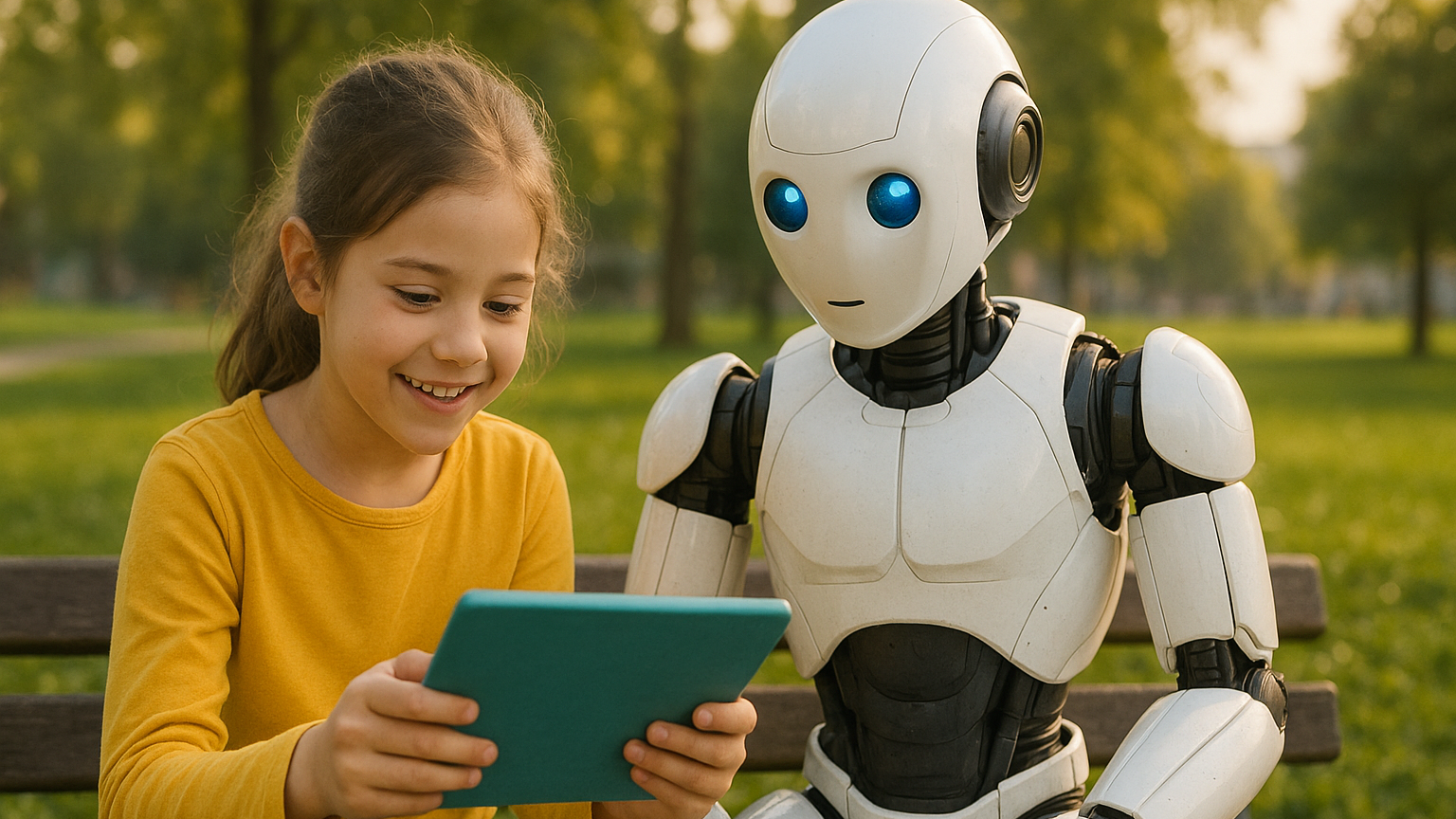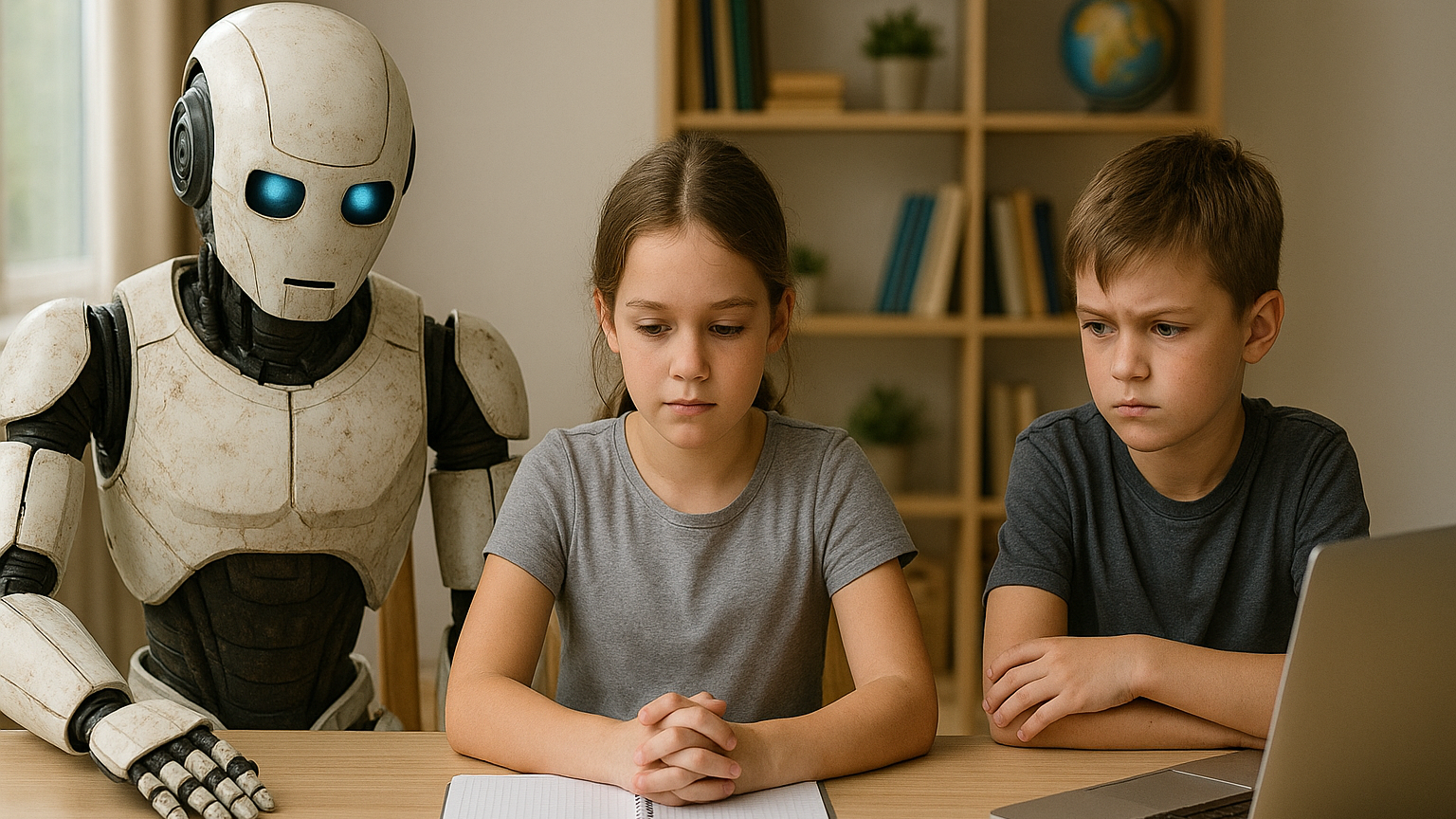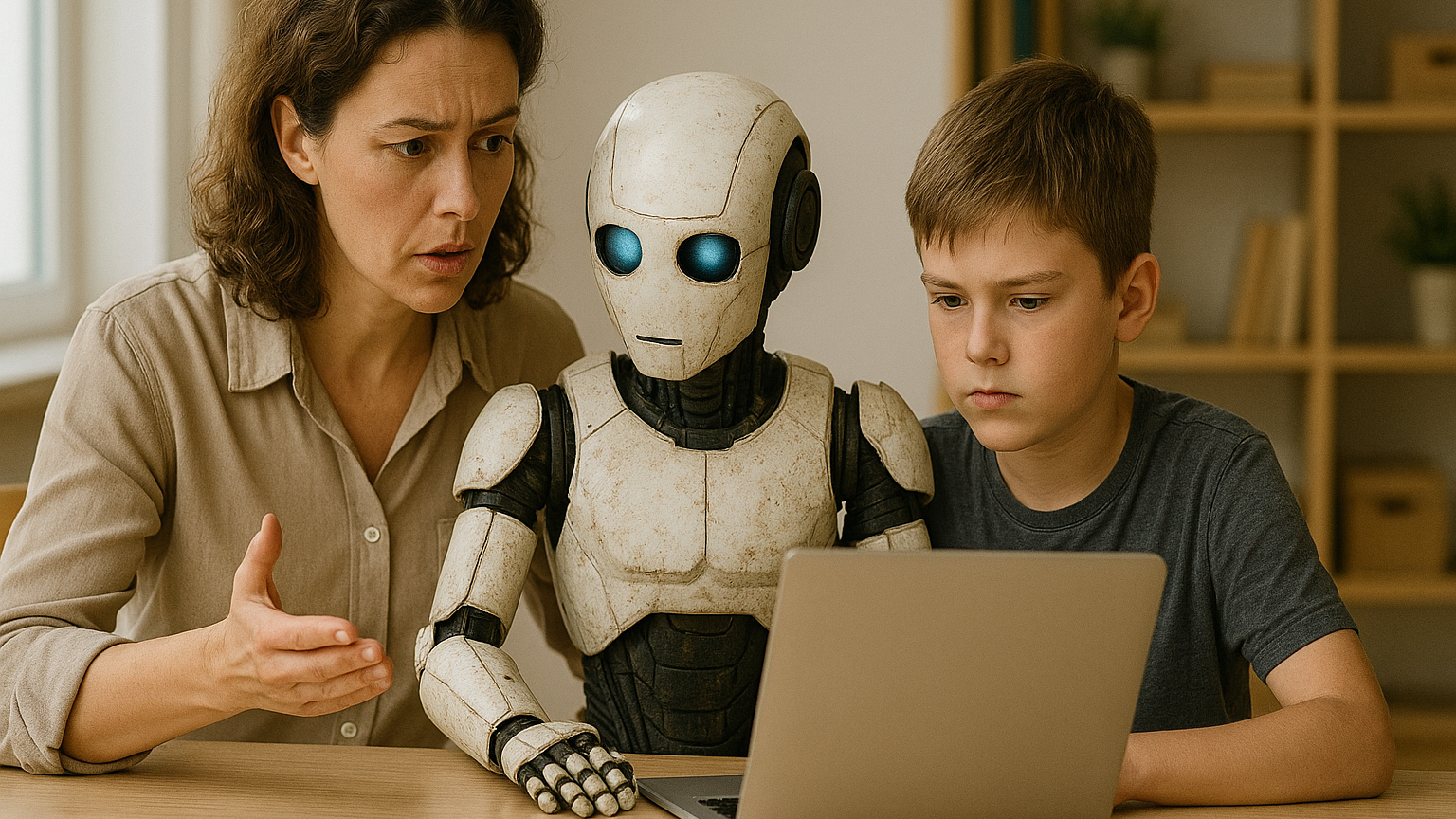Positive & Negative Effects of AI on Kids

Artificial Intelligence (AI) is becoming a regular part of children’s lives, from voice assistants and learning apps to smart toys and educational platforms. As this technology continues to shape the way children learn and interact with the world, parents and educators are beginning to ask an important question: what are the positive & negative effects of AI on kids?
While AI can provide engaging and personalized learning experiences, it also raises concerns about screen time, privacy, and social development. In this article, we’ll explore both sides of the story and help you better understand how to manage AI in your child’s life.
What Are the Positive & Negative Effects of AI on Kids?

Understanding the positive & negative effects of AI on kids starts with identifying how AI is used in their daily routines. Many children today interact with AI-powered tools at home, in school, or even while playing.
AI helps personalize lessons based on learning speed and style. It can adjust content difficulty, give instant feedback, and keep children motivated with gamified progress tracking. However, relying too much on AI can reduce face-to-face interactions and lead to excessive screen exposure.
As we explore each aspect, keep in mind that moderation and parental guidance are essential to maximizing the benefits of AI while avoiding its downsides.
Positive Effects of AI on Kids’ Learning and Development

One of the major positive effects of AI on kids is how it transforms the learning process. AI can create personalized learning paths that help students progress at their own pace. This is especially useful for children who need more time with certain subjects or want to advance beyond the standard curriculum.
Some common benefits include:
- Personalized education: Platforms like Duolingo, Khan Academy Kids, and Google’s Read Along adapt to a child’s learning speed and interests.
- Interactive engagement: AI-powered tools can make learning fun. Children feel like they are playing a game, which boosts motivation and retention.
- Support for special needs: AI can assist children with learning difficulties, such as dyslexia or ADHD, by providing tailored content and feedback.
- Language development: Tools like ChatGPT or AI-powered story apps can help kids practice conversation skills, learn vocabulary, and explore creative writing.
When used thoughtfully, AI can support cognitive development, encourage independent learning, and make education more accessible to all children.
Negative Effects of AI on Kids’ Behavior and Health

While the benefits are impressive, the negative effects of AI on kids should not be overlooked. Increased screen time and constant engagement with digital devices can affect children in many ways.
Here are some of the concerns:
- Reduced social interaction: Over-reliance on AI tools can limit kids’ real-world communication and collaboration with peers.
- Privacy and data concerns: AI tools often collect personal data. Parents must stay aware of how and where their child’s information is stored and used.
- Impaired creativity: When kids rely too much on automated answers or suggestions, it may reduce their problem-solving and critical thinking skills.
- Health risks: Excessive screen time is linked to eye strain, poor posture, and decreased physical activity.
These negative effects of AI on kids highlight the importance of setting boundaries and ensuring that AI is used as a supplement, not a replacement, for real-life experiences.
Balancing the Positive & Negative Effects of AI on Kids at Home and School

Finding the right balance between the positive & negative effects of AI on kids is the key to ensuring that technology supports rather than harms their development.
Here are some strategies:
- Set clear screen time limits: Encourage breaks and schedule offline activities like outdoor play or reading.
- Choose high-quality apps: Use tools that offer educational value and avoid those filled with ads or mindless content.
- Stay involved: Talk to your child about what they’re learning, and encourage them to ask questions or reflect on what they discover.
- Encourage a mix of learning methods: Combine AI-based tools with traditional learning and hands-on activities.
- Teach digital responsibility: Help kids understand the importance of online privacy, respectful communication, and balanced usage.
By creating a healthy digital environment at home and working with educators to do the same in schools, we can maximize the positive impact of AI while reducing the risks.
Managing the Positive & Negative Effects of AI on Kids

AI is here to stay, and its role in children’s lives will only continue to grow. As with any technology, the key is to use it intentionally. When guided properly, the positive & negative effects of AI on kids can be managed in a way that supports learning, creativity, and healthy development.
Parents, teachers, and caregivers all have a role in helping kids develop strong digital habits and a balanced approach to technology. With the right support, AI can be a powerful tool for growth rather than a source of distraction or harm.
Make AI Work for Your Child at Timedoor Academy
At Timedoor Academy, we believe in using technology the smart way. Our live, interactive coding and digital classes are designed to help kids explore AI, robotics, and programming while developing communication and critical thinking skills.
Looking for a healthy way to introduce tech into your child’s routine? Try our free class and see how we guide students to grow in a structured and inspiring environment.
Visit our website to learn more and start your child’s smart tech journey today!



